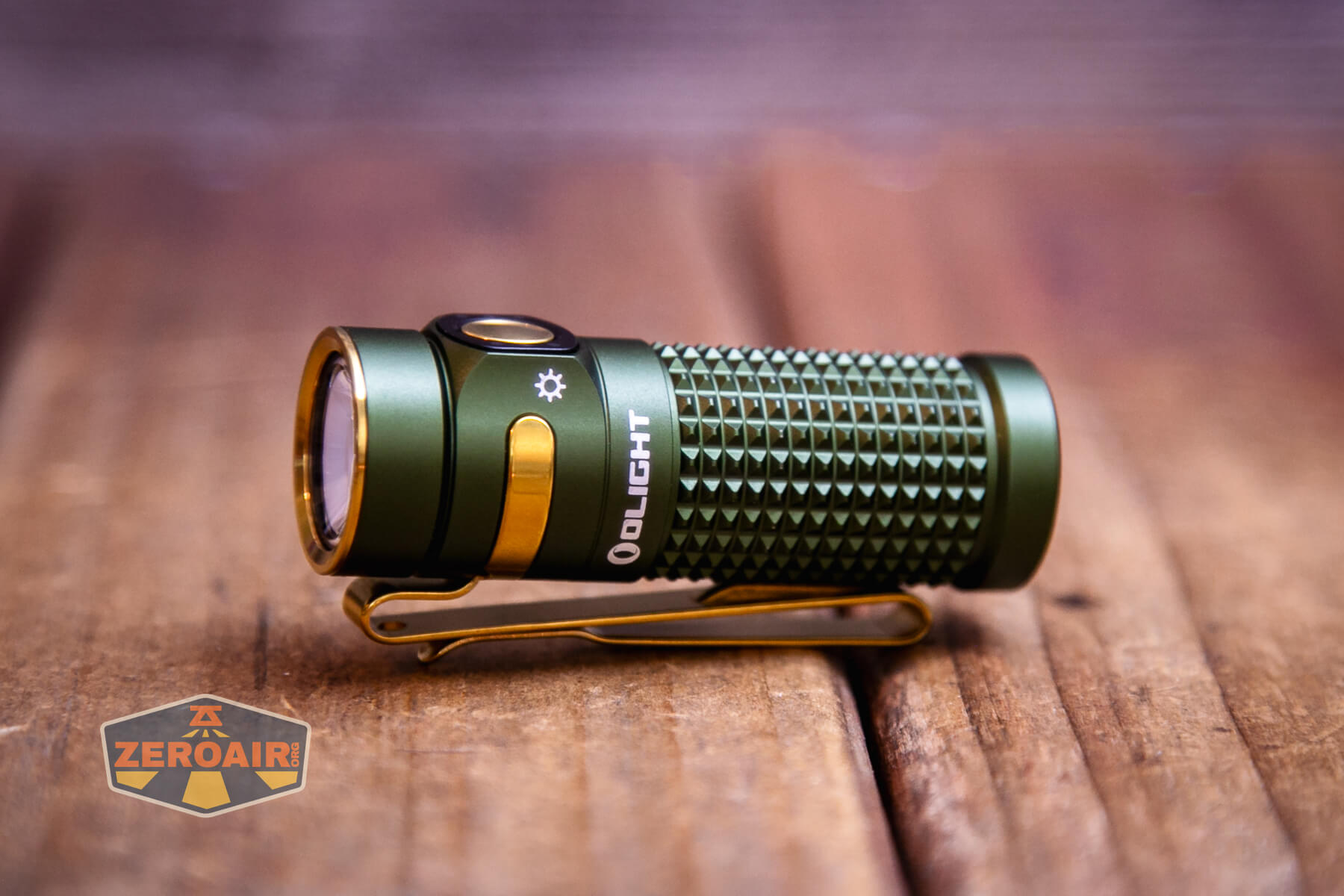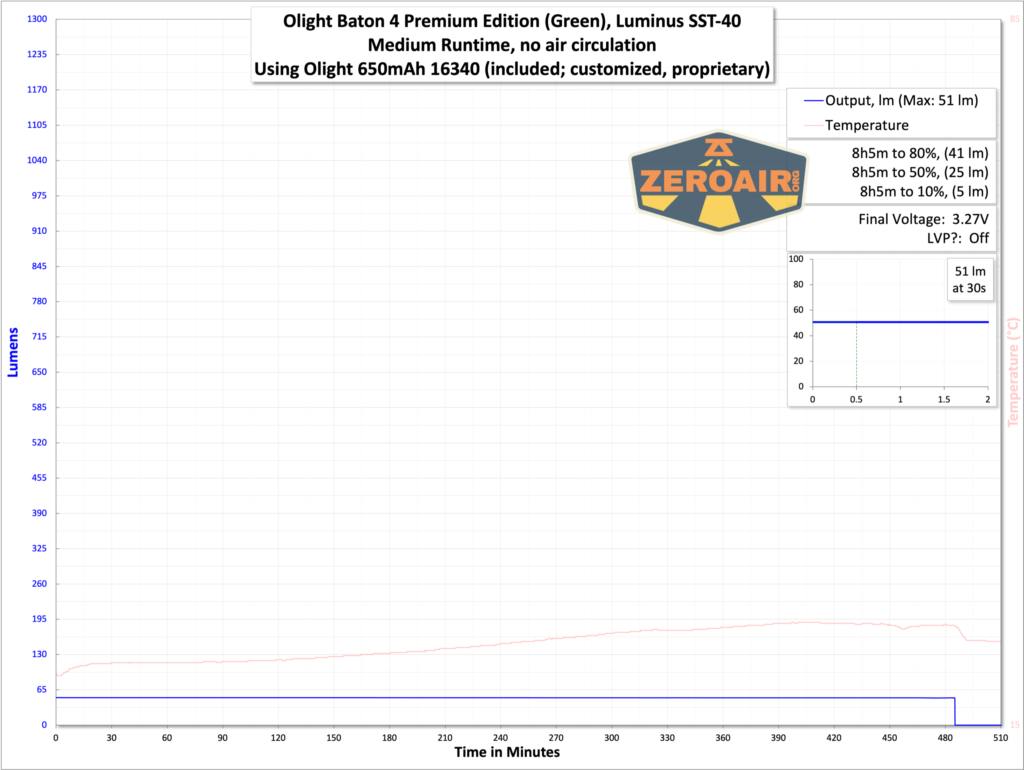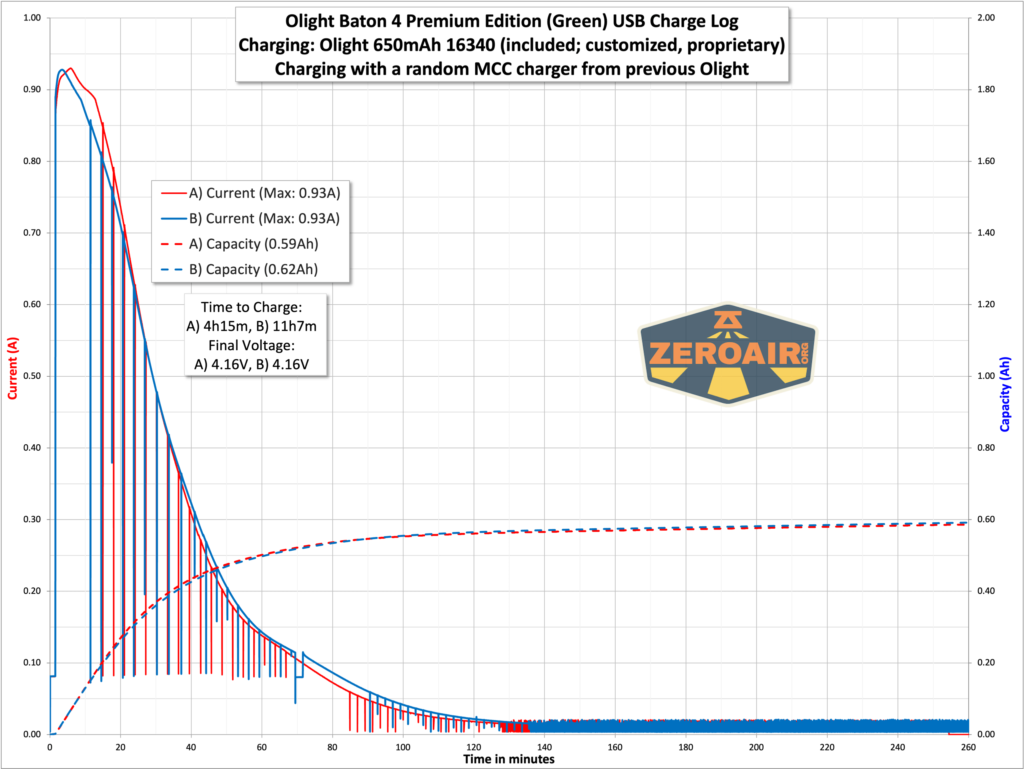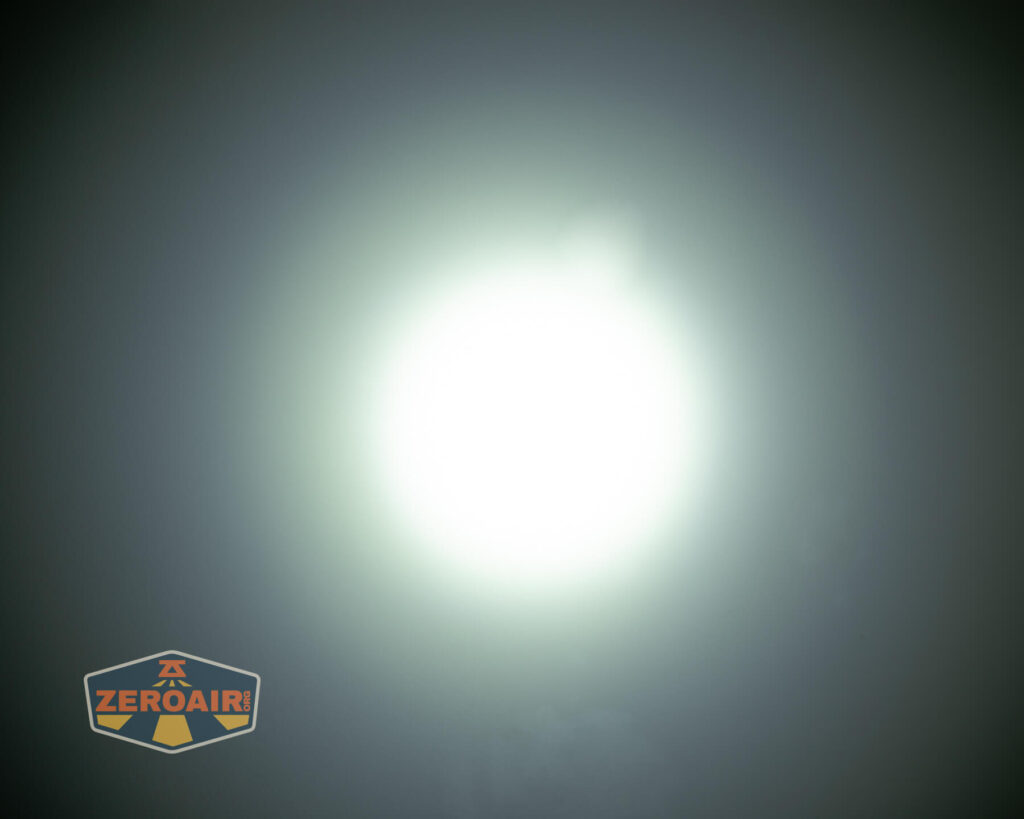Olight Baton 4 Premium Edition Flashlight Review
The Olight Baton 4 Premium Edition flashlight features some great updates including a metal-covered e-switch and still offers the neat “wireless” charging case!
Official Specs and Features
Here’s a referral link to the Olight Baton 4 Premium Edition flashlight product page.
Versions
Four versions of the non-Premium Edition are available. They differ only in body color, including one (Candy Cane) that’s a limited edition. Three versions of the Premium Edition are available: Black, Regal Blue, and Forest Green (seen here).
Price
This Premium Edition sells for an introductory price of $69.99 and can be bought through my referral link. That price will go up by around $30 after the initial sale!
As usual with Olight’s sale waves, there are a number of other items available in this sale window, and you should check them out. One great way to check all that stuff out is to go through this Black Friday link!
Short Review
The Olight Baton 4 Premium Edition flashlight is another great iteration of the 16340-sized Baton series of lights. I love the updated switch (I strongly prefer metal covers!) and the indicators beside the switch are welcome too. I don’t care anything about the “wireless charging” case but I can see how it’d be useful in a bag or something. So I support it, even though it’s not specifically useful to me.
Long Review
The Big Table
| Olight Baton 4 Premium Edition Flashlight | |
|---|---|
| Emitter: | Luminus SST-40 |
| Price in USD at publication time: | $69.99 (referral link) |
| Cell: | 1×16340 |
| Runtime Graphs | |
| LVP? | Yes |
| Switch Type: | E-Switch |
| Quiescent Current (mA): | ? |
| On-Board Charging? | Yes |
| Charge Port Type: | Proprietary magnetic |
| Charge Graph | |
| Power off Charge Port | All except Turbo |
| Claimed Lumens (lm) | 1300 |
| Measured Lumens (at 30s) | 1238 (95.2% of claim)^ |
| Candela per Lumen | 5.74 |
| Claimed Throw (m) | 170 |
| Candela (Calculated) in cd (at 30s) | 310lux @ 5.018m = 7806cd |
| Throw (Calculated) (m) | 176.7 (103.9% of claim)^ |
| Claimed CCT | – |
| Measured CCT Range (K) | 5300-5900 Kelvin |
| Item provided for review by: | Olight |
| All my Olight reviews! | |
^ Measurement disclaimer: Testing flashlights is my hobby. I use hobbyist-level equipment for testing, including some I made myself. Try not to get buried in the details of manufacturer specifications versus measurements recorded here; A certain amount of difference (say, 10 or 15%) is perfectly reasonable.
What’s Included
- Olight Baton 4 Premium Edition Flashlight
- Cell (customized 16340)
- “Wireless” charge case
- Charge cable (USB to USB-C)
- Cleaning cloth
- Lanyard
- Lanyard installation helper
- Manual and papers
Package and Manual
Build Quality and Disassembly
I have a bunch of Olight Batons. I have some reviewed, sure, but I have so many that I haven’t even reviewed. And a few of those batons are just about my most used lights – stock emitter and all. I am a big fan of the Olight Baton series. A big fan. A normal-sized fan with great fervor for the Baton series.
The green version is great. On the outside, not much has changed on the build. It’s still a small 16340 flashlight, with a two-way clip, a TIR optic, and an e-switch. All of these are good things. The old Batons were, by and large, very solid lights. You might have noticed that this version is updated in name and some features. Specifically, the switch is no longer silicone (or rubber or whatever – soft). The Olight Baton 4 Premium Edition flashlight has a metal cover!
And not just a metal cover. Beside the switch are indicators, very similar to what we’ve seen on the bigger Olights lately. I appreciate congruity among a brand’s products, and this gets Olight in line!
Whatever else you might say about the lights, they’re good enough. The build quality is great. The user interface is great. The capacity is great (enough for EDC). The output: great, especially on this new edition.
Inside, the Olight Baton 4 Premium Edition flashlight is like recent generations. The head has a bunch of contacts so that it can run the proprietary customized 16340. The tail has a spring.
Size and Comps
| Weight | Baton 4 Standard: 1.85oz / 52.5g (Battery Included); Baton 4 Premium: 6.84oz / 194g (Charging Case and Battery Included) |
| Dimension | Flashlight: 2.48 x 0.83 x 0.83 in (63 x 21 x 21 mm); Charging Case: 2.56 x 1.26 x 3.46 in (65 x 32 x 88 mm) |
If the flashlight will headstand, I’ll show it here (usually the third photo). If the flashlight will tailstand, I’ll also show that (usually in the fourth photo).
Here’s the test light with the venerable Convoy S2+. The version below is a custom laser-engraved Convoy S2+ host by GadgetConnections.com. I did a full post on an engraved orange host right here! Or go straight to GadgetConnections.com to buy your Convoy S2+ now!
Also above is the light beside a new standard 18350 light! It’s not one I’ve reviewed yet but this is the CWF Arcadian Peanut in aluminum. This one is stonewashed and has the new Quantum Dragon driver – a whole new product! Stay tuned for a full review of this tiny powerhouse!
Retention and Carry
We can speak about the Olight Baton 4 Premium Edition flashlight having two carry methods. First is the pocket clip, which is mostly the same as previous generations, but with small tweaks.
It’s a two-way clip, which I don’t often love, but this is a reasonable implementation – being two-way doesn’t cause too much extra size.
There’s also a lanyard hole in the pocket clip.
Because of the two-way clip, the light can be used on a cap, too.
The included lanyard also includes a little puller. This is excessive but is actually useful – weaving that loop into the clip can be a hassle!
The tailcap has the standard magnetic charging base, which can still be used as a means to secure the light.
Also, of course, there’s the “wireless charging case,” which we’ll cover more below.
Power and Runtime
The Olight Baton 4 Premium Edition flashlight (and also the not premium edition) is powered by a single lithium-ion cell.
This is a customized 16340, with both positive and negative terminals on the positive end. A “normal” (or “non-customized”) 16340 will not work in this light.
Not only that but the positive terminal is recessed into a plastic shroud. This shroud will prevent charging of the cell in most if not all bay chargers.
Here are a few runtime tests. Pretty incredible output for a 16340 light! This is held for around a minute, which is also nice to see. At around that point, temperature starts to increase enough that you really shouldn’t want that level of output to continue out of a light this small. The stepdown is to High level. Low voltage protection is observed, with a switch warning (red) and the light finally turning off.
It seems like the light shuts off around 2.6V on bench power, but with a cell I think it’s much higher according to the testing above.
Those new indicators (in this case, the ones on the right side of the switch) display the power level, as follows:
Three green dots: ≥60%
Two green dots: 10-60%
One green dot: 5-10%
One red dot: <5%
Charging
Also, a feature of the Olight Baton 4 Premium Edition flashlight is the Wireless Charge case. This case appears to be essentially the same as the previous generation Premium Edition wireless charging cases. It’s definitely functionally the same.
This case claims a capacity of 5000mAh, and that’s feasible if the cell inside there is a 21700. I don’t think there are any 5000mAh 18650 cells, though.
For charging of the actual case, Olight provides an appropriate cable, which is USB to USB-C.
This means that with the Premium Edition, you do not get the standard MCC charger. I have no doubt that if you get the non-Premium (ie just the light), then you’ll get an MCC charger. However, and you’re probably not going to like this suggestion…. If you’re buying this light, I think you should actually buy two. Buy a Premium Edition to get the case. And buy a regular edition not for the MCC charger, but so you can rotate out your Baton 3 lights in the case!
I couldn’t really find a great way of testing the Wireless Charger, so I tested it with one of my other MCC charge bases, in the normal way.
I didn’t disassemble the charging case. If you want to see the disassembly of a previous generation, check out this other review.
Again I’ll reiterate how cool it would be if the cell inside this charging case was removable! If it could be pulled out and popped into one of the bigger Batons or a Seeker (if it’s 21700), that’d be so great.
So we’re all caught up:
- The Baton 4 has a typical magnetic charge base.
- The Baton 4 Wireless Case has (for charging the Baton 4) a charging base just like on the MCC chargers Olight has used for ages.
- The Wireless case itself is charged by USB-C.
A couple more points about the case, and I’ll do it here since I really don’t know where else. Yes, the light can be in an on state while in the case and the case open. Closing the case will turn off the light, though. I am completely unclear how this works….
Powerbank
One more thing about this wireless charging case. The USB-C charging port is not just for charging the built-in battery and also the Baton 4 (among other Olight Batons), it can also be used as a powerbank!
Modes and Currents
| Mode | Mode Claimed Output (lm) | Claimed Runtime | Measured Lumens | Tailcap Amps |
|---|---|---|---|---|
| Turbo | 1300/600/300 | 1.5m/2.5m/73m | 1274 (0s) 1238 (30s) |
2.80 |
| High | 600/300/60 | 7m/72m/16m | 563 | 0.90 |
| Medium | 60 | 8h | 51 | 0.06 |
| Low | 12 | 35h | 12 | 0.01 |
| Moon | 0.5 | 30d | 0.06 | [low] |
Pulse Width Modulation
There’s some sawtooth going on in the lower 3 modes, but I’m hesitant to call this PWM directly.
Here you can see a “baseline” – a chart with almost no light hitting the sensor. Then there’s the Ultrafire WF-602C flashlight, which has some of the worst PWM I’ve seen. It’s so bad that I used a post about it to explain PWM! Here are multiple timescales (10ms, 5ms, 2ms, 1ms, 0.5ms, 0.2ms) to make comparing this “worst” PWM light to the test light easier. That post also explains why I didn’t test the WF-602C at the usual 50us scale.
User Interface and Operation
The Olight Baton 4 Premium Edition flashlight has an e-switch on the head end of the side of the body. The switch cover is metal, and that’s a massive advance here. Yes, ultimately it’s not that big of a deal, but I still prefer this. All the way down to my Convoys, and up to my BOSSes, I prefer a metal switch.
The switch area has a couple of indicators, too. These indicators aren’t technically on the switch, but in the surrounding bit of black plastic. Above, the left side indicates the output level. The right side indicates the battery level.
This switch is a bit more flush than the slight dome of previous (non-metal) switches. I like it! If you place the light “switch-down” (clip-up, ayy), the switch can not be pressed by mashing the light against a table. (Ie it doesn’t protrude that much or that way.)
Here’s a user interface table! You’ll know this user interface from years. The S1R Baton II (and others, obviously) uses the same UI.
| State | Action | Result |
|---|---|---|
| Off | Click | On (mode memory)^ |
| On | Hold (release at desired mode) | Mode cycle (Moon, L, M, H) (no Turbo) |
| Off | Hold | Moonlight |
| Any | Double click | Turbo |
| Any | Triple click | Strobe |
| Strobe | Click | Off |
| Strobe | Hold | Previous Mode |
| Off | Long hold (past Moonlight) | Lockout |
| Lockout | Hold | Unlock to Moonlight |
| On | Click and Hold (quickly)^^ | Timer (Single blink: 3 minutes, Double blink: 9 minutes) |
| Timer | Click and Hold (quickly)^^ | Switch between 3 and 9-minute timers. |
^ Moon, Low, Medium, and High are memorized. Turbo is memorized as High.
^^ The manual states this as “Double click and hold” but I think it should be “click and hold” quickly. Any form of double click ends in Turbo or Strobe. The manual hasn’t been corrected yet, after all these years of this model.
There’s a second way to operate this light, too. The wireless charging case has a button.
On the case above, where there’s a little display saying “15” – that’s a switch! When the Baton 4 is inside this case, that button (on the case!) acts as the e-switch for (fully!) controlling the Baton 4. This switch will work with some of the other batons, but not as many as the case itself will charge.
When you close the case, the light shuts off automatically.
LED and Beam
Olight has gone with the usual setup for the Baton 4: A press-fit bezel, a TIR optic, and a cool white CCT (“6000K-7000K”).
LED Color Report (CRI and CCT)
In practice, the CCT isn’t really over 6000K – that’s great! On the lower modes, it’s even pleasantly neutral (at around 5200K). The output is a bit greenish, though, with the positive Duv demonstrating that.
Beamshots
These beamshots always have the following settings: f8, ISO100, 0.3s shutter, and manual 5000K exposure. These photos are taken at floor level, and the beam hits the ceiling around 9 feet away.
Tint vs BLF-348 (KillzoneFlashlights.com 219b version) (affiliate link)
I keep the test flashlight on the left and the BLF-348 reference flashlight on the right.
I compare everything to the KillzoneFlashlights.com 219b BLF-348 because it’s inexpensive and has the best tint!
Conclusion
What I like
- Build quality is quite good, as usual
- Full package includes charging and cell
- The user interface retains neat features from previous models, like the 3 or 9-minute timer
- Output does hit the claimed specification
- Wireless Case works suitably
- Case can be used for controlling the light output (and it shuts off when the case closes)
What I don’t like
- Proprietary cells don’t work in bay chargers
- Cool white tint
Notes
- This content originally appeared at zeroair.org. Please visit there for the best experience!
- For flashlight-related patches, stickers, and gear, head over to PhotonPhreaks.com!
- Please use my amazon.com referral link to help support zeroair.org!
- Please support me on Patreon! I deeply appreciate your support!









































































